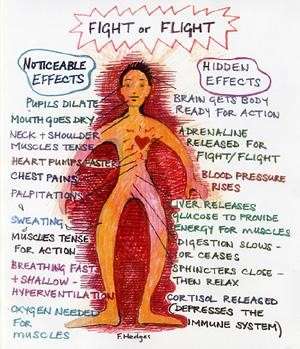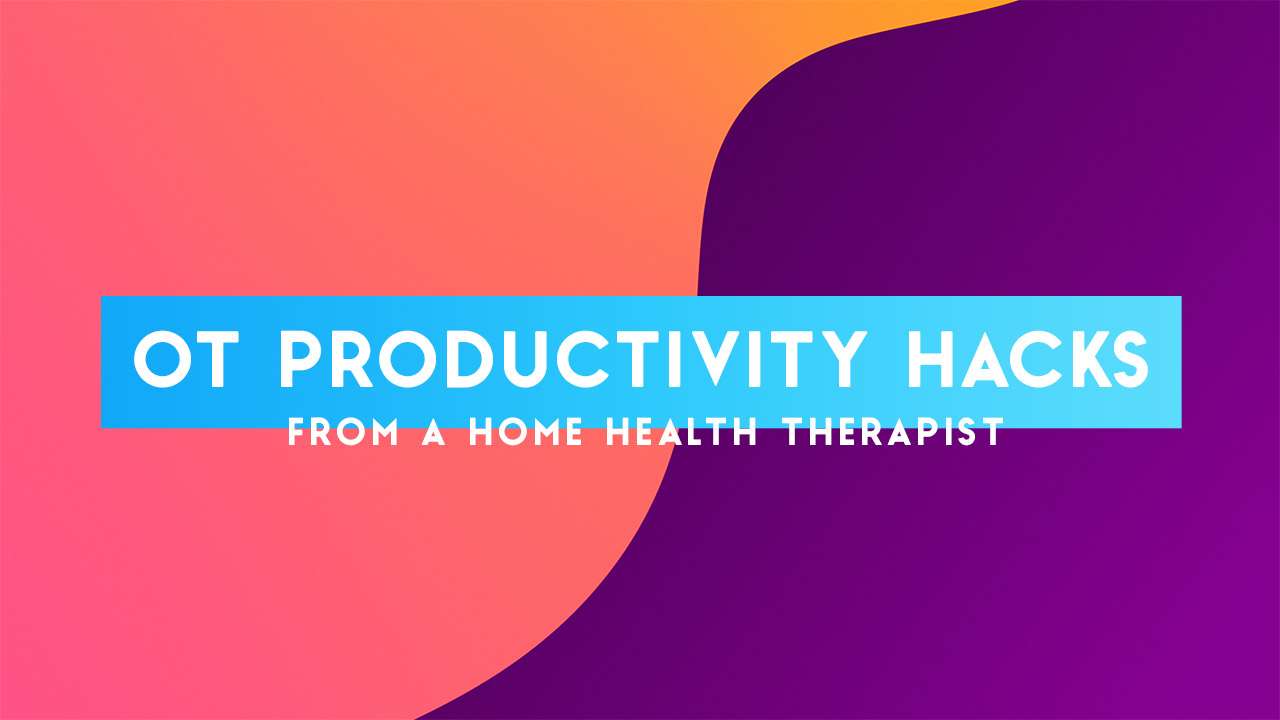Biofeedback and Stress Management
Understanding Stress
Often, we talk about stress as a bad thing that makes our lives hard. But, did you know that stress is important and necessary for us to function as human beings? It’s true! Stress is what gives you motivation and energy to deal with challenges that you are experiencing from simple homework assignments to major life-threatening challenges that may arise.
Stress affects many of your body’s regular functions. Most people experience combinations of many of the following physiological changes with high levels of stress, often referred to as “fight or flight” sensations:

-
Increased heart rate
-
Faster, more shallow breathing
-
Increased muscle tension
-
Decreased digestion – “Butterflies” in your stomach
-
Heightened emotions, irritability
-
Sweating
-
Colder hands/feet
These physical sensations are often uncomfortable and seem to get in the way of what we are trying to do. These changes are actually your body’s way of providing energy to act quickly to get away from danger or face whatever challenge is in your way.
The real problem with stress comes when we try to stop stress from happening instead of acting on the source of our stress. When we focus only on getting ourselves to feel better right away by getting rid of uncomfortable feelings, we usually overlook the actual problems that we are facing. We don’t actually reduce our stress in the long run either, which means it keeps coming back and gets harder and harder to deal with because we keep trying to get rid of it.
There is a better way to manage stress! When we realize that stress is actually a helpful mechanism and not something to be afraid of or rid of, then we can turn our attention and energy toward the tasks and problems that we can act to solve. If you let it, stress will give you energy and motivation to work on whatever difficult thing you need to do.
Sometimes stress gets so high that it is hard to act and do what we need to do. In those situations, it is helpful to have some strategies for dealing effectively with what we are experiencing so that stress is at a more manageable level. There are many effective strategies that can be used. Some are helpful to do right when you feel stressed, and others are helpful to do on a regular basis to prepare you for moments of stress.
Overview
Biofeedback is a technique you can use to learn to control some of your body’s functions, such as your heart rate. During biofeedback, you’re connected to electrical sensors that help you receive information about your body.
This feedback helps you make subtle changes in your body, such as relaxing certain muscles, to achieve the results you want, such as reducing pain. In essence, biofeedback gives you the ability to practice new ways to control your body, often to improve a health condition or physical performance.
Types of biofeedback
Your therapist might use a variety of biofeedback methods depending on your health problems and goals. Biofeedback types include:
- Brain waves. This type uses scalp sensors to monitor your brain waves using an electroencephalograph (EEG).
- Breathing. During respiratory biofeedback, bands are placed around your abdomen and chest to monitor your breathing patterns and respiration rate.
- Heart rate. This type uses finger or earlobe sensors with a device used to detect blood volume changes (photoplethysmograph). Or sensors placed on your chest, lower torso or wrists use an electrocardiograph (ECG) to measure your heart rate and how your heart rate varies.
- Muscle contraction. This type involves placing sensors over your skeletal muscles with an electromyograph (EMG) to monitor the electrical activity that causes muscle contraction.
- Sweat gland activity. Sensors attached around your fingers or on your palm or wrist with an electrodermograph (EDG) measure the activity of your sweat glands and the amount of perspiration on your skin, alerting you to anxiety.
- Temperature. Sensors attached to your fingers or feet measure blood flow to your skin. Because your temperature often drops when you’re under stress, a low reading can prompt you to begin relaxation techniques.
Biofeedback devices
You can receive biofeedback training in physical therapy clinics, medical centers and hospitals. A growing number of biofeedback devices and programs also are being marketed for home use, including:
-
Interactive computer programs or mobile devices. Some types of biofeedback devices measure physiological changes in your body, such as your heart rate activity and skin changes, by using one or more sensors attached to your fingers or your ear. The sensors plug into your computer.
Using computer graphics and prompts, the devices then help you master stress by helping you to pace your breathing, relax your muscles and think positive self-statements about your ability to cope. Studies show that these types of devices might be effective in improving responses during stress and inducing feelings of calm and well-being.
Another type of biofeedback therapy involves wearing a headband that monitors your brain activity while you meditate. It uses sounds to let you know when your mind is calm and when it’s active to help you learn to control your stress response. The information from each session can be stored on your computer or mobile device so that you can track your progress over time.
- Wearable devices. One type involves wearing a sensor on your waist that monitors your breathing and tracks your breathing patterns using a downloadable app. The app can alert you if you’re having prolonged tension, and it offers guided breathing activities to help restore your calm.
The Food and Drug Administration (FDA) has approved a biofeedback device, Resperate, for reducing stress and lowering blood pressure. Resperate is a portable electronic device that promotes slow, deep breathing.
However, the FDA doesn’t regulate many biofeedback devices marketed for home use. Before trying biofeedback therapy at home, discuss the types of devices with your care team to find the best fit.
Be aware that some products might be falsely marketed as biofeedback devices, and that not all biofeedback practitioners are legitimate.
Why it’s done
Biofeedback, sometimes called biofeedback training, is used to help manage many physical and mental health issues, including:
- Anxiety or stress
- Asthma
- Attention-deficit/hyperactivity disorder (ADHD)
- Chemotherapy side effects
- Chronic pain
- Constipation
- Fecal incontinence
- Fibromyalgia
- Headache
- High blood pressure
- Irritable bowel syndrome
- Raynaud’s disease
- Ringing in the ears (tinnitus)
- Stroke
- Temporomandibular joint disorder (TMJ)
- Urinary incontinence
Biofeedback appeals to people for a variety of reasons:
- It’s noninvasive.
- It might reduce or eliminate the need for medications.
- It might enhance the benefits of medications.
- It might help women who can’t take medication during pregnancy.
- It helps people feel more in control of their health.
Risks
Biofeedback is generally safe, but it might not be appropriate for everyone. Biofeedback devices might not work properly on people with certain medical conditions, such as heart rhythm problems or certain skin conditions. Be sure to discuss it with your doctor first.
How you prepare
You don’t need special preparation for biofeedback.
To find a biofeedback therapist, ask your doctor or another health care professional with knowledge of biofeedback therapy to recommend someone who has experience treating your condition. Many biofeedback practitioners are licensed in another area of health care, such as psychology, nursing or physical therapy.
State laws regulating biofeedback practitioners vary. Some biofeedback practitioners choose to become certified to show their extra training and experience in the practice.
Ask a biofeedback practitioner you’re considering using questions before starting treatment, such as:
- Are you licensed, certified or registered?
- What is your training and experience?
- Do you have experience providing biofeedback for my condition?
- How many biofeedback sessions do you think I’ll need?
- What’s the cost and is it covered by health insurance?
- Can you provide a list of references?
What you can expect
During the procedure
During a biofeedback session, a therapist attaches electrical sensors to different parts of your body. These sensors might be used to monitor your brain waves, skin temperature, muscle tension, heart rate and breathing. This information is fed back to you via cues, such as changes on a monitor, a beeping sound or a flashing light.
The feedback teaches you to change or control your body’s reactions by changing your thoughts, emotions or behavior. This can help the condition for which you sought treatment.
For instance, biofeedback can pinpoint tense muscles that are causing headaches. You then learn how to make deliberate physical changes in your body, such as relaxing specific muscles, to reduce your pain. The ultimate goal with biofeedback is to learn to use these techniques at home on your own.
A typical biofeedback session lasts 30 to 60 minutes. The length and number of sessions are determined by your condition and how quickly you learn to control your physical responses. Biofeedback might not be covered by insurance.
Results
If biofeedback is successful for you, it might help you control symptoms of your condition or reduce the amount of medication you take. Eventually, you can practice the biofeedback techniques you learn on your own. Don’t stop the medical treatment for your condition, however, without consulting your care team.
Clinical trials
Explore Mayo Clinic studies of tests and procedures to help prevent, detect, treat or manage conditions.



